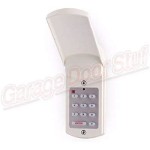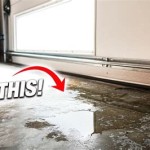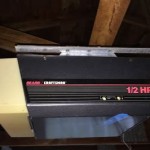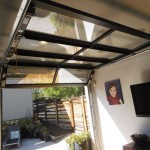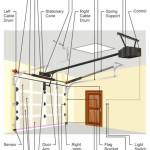Legacy Overhead Garage Door Opener: A Comprehensive Overview
The Legacy overhead garage door opener represents a significant entry in the realm of residential and commercial access control systems. Designed to automate the opening and closing of garage doors, the Legacy model offers a blend of functionality, security, and convenience. This article aims to provide a detailed overview of the Legacy opener, encompassing its key features, operational characteristics, installation considerations, maintenance requirements, and troubleshooting strategies.
Garage door openers, in general, have evolved considerably over the years. Early models were often manually operated, cumbersome, and lacked safety features. Modern openers, such as the Legacy, incorporate advanced technologies like remote control operation, automatic reversal systems, and security encryption to enhance both user experience and safety. The Legacy opener, in particular, is engineered to provide reliable performance and long-term durability, fulfilling the demands of diverse residential and commercial settings.
Understanding the various components and operational principles of the Legacy overhead garage door opener is crucial for effective utilization and maintenance. This knowledge base allows users to diagnose potential issues, perform routine upkeep, and ensure the continued smooth operation of the system. Furthermore, it aids in making informed decisions regarding installation, upgrades, and repairs.
Key Features and Technologies
The Legacy overhead garage door opener boasts several key features designed to enhance its performance and user experience. These features are underpinned by specific technologies that contribute to the overall reliability and security of the system.
One of the primary features is its remote control functionality. The Legacy opener typically includes one or more remote control units that allow users to operate the garage door from a distance, usually from within a vehicle. These remote controls communicate with the opener unit via radio frequency (RF) signals. To prevent unauthorized access, Legacy openers employ rolling code technology, where the transmission code changes with each use. This significantly reduces the risk of code interception and replay attacks, ensuring a higher level of security compared to fixed-code systems.
Another critical feature is the automatic reversal system. This safety mechanism detects obstructions during the closing cycle and automatically reverses the door's direction, preventing potential injuries or damage. The system typically relies on either infrared sensors or a force-sensing mechanism. Infrared sensors, also known as safety eyes, are positioned near the bottom of the door opening. If an object or person interrupts the infrared beam, the door automatically reverses. Force-sensing mechanisms, on the other hand, monitor the amount of force exerted by the door as it closes. If the force exceeds a pre-determined threshold, indicating an obstruction, the door reverses.
The Legacy opener also includes a manual release mechanism, which allows users to disengage the opener from the door in case of a power outage or malfunction. This mechanism typically involves pulling a release cord, disconnecting the door from the drive trolley, and enabling manual operation of the door. This feature is essential for ensuring access to the garage in emergency situations.
The motor of the Legacy garage door opener is another key component. Most Legacy openers utilize either AC (alternating current) or DC (direct current) motors. AC motors are generally more robust and less expensive, while DC motors offer smoother and quieter operation. The horsepower rating of the motor determines the opener's lifting capacity, which should be selected based on the weight and size of the garage door. A larger, heavier door requires a more powerful motor to ensure reliable operation.
Finally, many Legacy openers incorporate smart home integration capabilities. This allows users to control and monitor the garage door remotely via a smartphone app or other compatible device. The system may connect to a home Wi-Fi network and integrate with other smart home platforms, enabling features such as scheduling automatic door closures, receiving notifications when the door is opened or closed, and granting temporary access to authorized users.
Installation Considerations
Proper installation is crucial for ensuring the reliable and safe operation of the Legacy overhead garage door opener. A poorly installed opener can lead to malfunctions, premature wear, and potential safety hazards. Therefore, it is imperative to follow the manufacturer's instructions carefully and to address any potential issues during the installation process.
Before beginning the installation, it is important to inspect the garage door and its associated hardware to ensure that they are in good working condition. Any existing problems, such as damaged springs, rollers, or tracks, should be addressed before installing the opener. A properly functioning door is essential for the opener to operate smoothly and efficiently.
The installation process typically involves mounting the opener unit to the garage ceiling, attaching the track to the door, connecting the trolley to the door, and installing the safety sensors. The mounting location should be chosen carefully to ensure that the opener is securely fastened and that the track is properly aligned with the door. The track should be securely attached to the door frame to prevent movement or vibration during operation.
The safety sensors should be installed at the proper height, typically six inches above the floor, and should be aligned to ensure that the infrared beam is not obstructed. If the sensors are not properly aligned, the door may not close properly, or the automatic reversal system may not function correctly. It is essential to test the safety sensors after installation to verify that they are working as intended.
Wiring is another critical aspect of the installation process. The opener should be connected to a dedicated electrical circuit with the appropriate voltage and amperage rating. It is important to follow all local electrical codes and regulations when wiring the opener. If you are not comfortable working with electricity, it is best to hire a qualified electrician to perform the wiring.
After the opener is installed, it is important to adjust the travel limits to ensure that the door opens and closes fully without slamming or overextending. The travel limits determine the distance the door travels in each direction. If the travel limits are not properly adjusted, the door may not close completely, or it may damage the door or the opener.
Maintenance and Troubleshooting
Regular maintenance is essential for ensuring the long-term reliability and optimal performance of the Legacy overhead garage door opener. Performing routine inspections and addressing potential issues promptly can prevent more serious problems from developing and extend the lifespan of the opener.
One of the most important maintenance tasks is lubricating the moving parts of the opener. This includes the chain or belt, the rollers, and the hinges. Lubrication reduces friction and wear, allowing the door to operate smoothly and quietly. It is recommended to use a garage door lubricant specifically designed for this purpose. Avoid using 일반적인 윤활제, as they may attract dirt and debris, which can accelerate wear.
Regularly inspect the springs, cables, and rollers for signs of wear or damage. Damaged or worn components should be replaced promptly to prevent further damage and potential safety hazards. The springs are under high tension, so it is important to exercise caution when working with them. If you are not comfortable working with springs, it is best to hire a qualified technician.
Test the safety sensors monthly to ensure that they are functioning correctly. This can be done by placing an object in the path of the infrared beam and verifying that the door reverses when it is closing. If the sensors are not working properly, clean the lenses and check the wiring connections. If the problem persists, the sensors may need to be replaced.
Common troubleshooting issues with Legacy garage door openers include the door not opening or closing, the door reversing unexpectedly, the remote control not working, and the opener making excessive noise. If the door does not open or close, check the power supply, the safety sensors, and the travel limits. If the door reverses unexpectedly, check the safety sensors and the force-sensing mechanism. If the remote control does not work, replace the batteries and check the programming. If the opener is making excessive noise, lubricate the moving parts and check for worn or damaged components.
Keeping the area around the garage door clear of obstructions is also important for preventing malfunctions. Objects that obstruct the safety sensors or interfere with the door's movement can cause the opener to malfunction or damage the door.
By adhering to these maintenance practices and addressing any potential issues promptly, users can ensure the continued reliable and safe operation of their Legacy overhead garage door opener.

Legacy 850 Belt Drive Opener Overhead Door Company Huntsville

Overhead Door Legacy 920 Residential Garage Opener

Overhead Door Openers Allow Remote Monitoring 2024 11 09 Sdm Magazine

Overhead Door Legacy 850 Residential Garage Opener

Legacy 850 Opener Overhead Door Co Of Southern

Program Remote For Overhead Door Legacy 696 Cd B

Legacy 920 Opener Overhead Door Of Southern

Overhead Door Legacy 650 Residential Garage Opener

Legacy 650 Belt Drive Overhead Door Company Of Huntsville

How To Reset A Legacy Overhead Garage Door 696cd B Youtube
See Also

